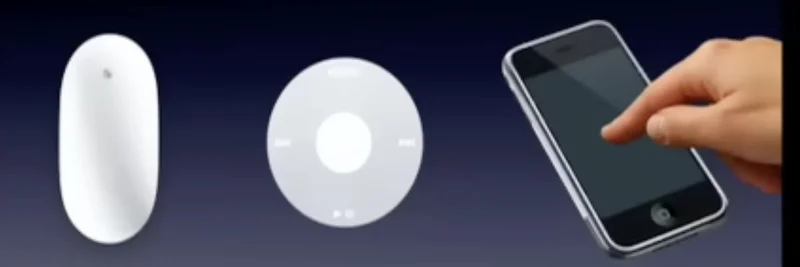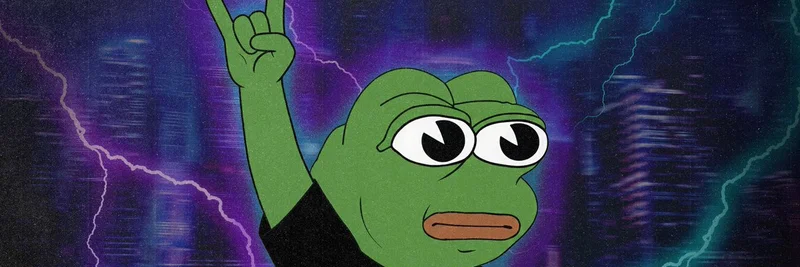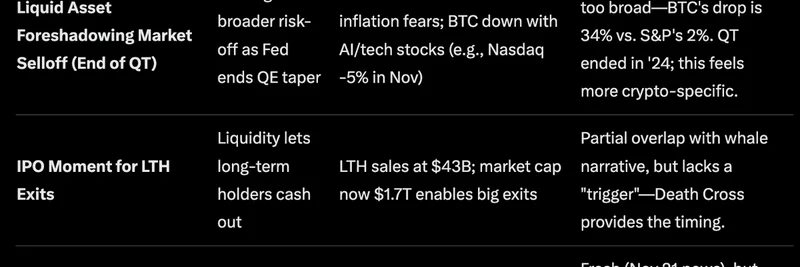In the fast-paced world of crypto, where meme tokens thrive on community hype and viral trends, user experience can make or break a project. A recent thread on X sparked an intriguing conversation about the future of interfaces, and it's got us thinking about how it ties into the meme token ecosystem.
It all started with Hannah Ahn, head of design and media at Superpower, sharing a classic slide from Apple's playbook. The image highlights revolutionary shifts in user interfaces: from the mouse to the click wheel, and then to multi-touch screens.
Ahn captioned it simply: "I do often wonder what's next." Enter Edgar Pavlovsky, founder of Dark Research AI and MTNDAO, who chimed in with a bold prediction: generative user interfaces (or GenUI) as the starting point for the next evolution.
Pavlovsky draws a parallel to how touch screens replaced physical buttons, offering infinite interaction possibilities. He argues that software experiences should be just as adaptable and flexible. A reply from Denzel called it "ahead of the curve," and Pavlovsky doubled down, saying the "curve will be beautiful and generative."
What Are Generative User Interfaces?
If you're new to the term, GenUI refers to interfaces dynamically created in real-time by AI models, like large language models (LLMs). Instead of static screens designed by developers, these UIs adapt to your needs, generating custom layouts, tools, and visuals on the fly. Think of it as AI not just answering questions but building entire interactive experiences around them.
Recent advancements, such as Google's Generative UI with Gemini, show this in action. For instance, an AI could whip up a personalized dashboard for tracking stocks or even simulate scenarios with interactive elements. Tools like the AI SDK for generative interfaces and Flutter's dynamic UI support are making this accessible for developers.
In essence, GenUI shifts from predefined designs to adaptive, user-centric ones, much like how generative AI is reshaping UX design.
How GenUI Could Supercharge Meme Tokens
Meme tokens aren't just about the laughs—they're powered by communities that create, share, and trade digital assets at lightning speed. Traditional platforms often feel clunky, with fixed menus and forms that don't keep up with the chaos of a viral pump. That's where GenUI steps in, potentially revolutionizing how we interact with blockchain-based meme ecosystems.
Imagine logging into a meme token dApp (decentralized application) where the interface morphs based on your behavior. If you're a creator, it might generate tools for whipping up AI-assisted memes right there—complete with customizable templates, real-time collaboration features, and integration with NFT minting. For traders, it could build a dynamic dashboard that pulls in live sentiment analysis from social media, predicts trends using on-chain data, and even suggests personalized trading strategies.
This ties beautifully into blockchain's strengths. Generative AI and blockchain can team up for things like automated smart contracts that adapt interfaces on the fly, ensuring transparency and security while making everything feel intuitive. No more wrestling with complex wallets or confusing DEX (decentralized exchange) screens—GenUI could generate step-by-step guides or visual simulations tailored to your experience level.
In the meme space, where virality is king, personalized UIs could boost engagement. Picture a community hub that generates event calendars, polls, or even gamified challenges based on current trends. It could pull in data from sources like CoinMarketCap or on-chain analytics, creating immersive experiences that keep users hooked.
Challenges and the Road Ahead
Of course, it's not all smooth sailing. Integrating GenUI with blockchain means tackling issues like data privacy—after all, AI needs context to personalize, but blockchain emphasizes decentralization and user control. There's also the risk of over-reliance on AI, where buggy generations could lead to poor UX or even security slips.
Still, early explorations in blockchain AI interface design suggest strategies like modular components and real-time feedback loops to make it work. As tools evolve, we might see meme token projects experimenting with GenUI to stand out in a crowded market.
Pavlovsky's thread reminds us that innovation in interfaces has always driven tech forward. For meme tokens, embracing generative UI could mean more accessible, fun, and efficient platforms that attract a broader audience. Whether it's the next multi-touch moment or just a stepping stone, it's worth watching how AI reshapes the crypto playground.
What do you think—is GenUI the future of meme token dApps? Drop your thoughts in the comments or hit us up on socials. Stay tuned to Meme Insider for more on cutting-edge trends in the meme token world.



